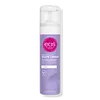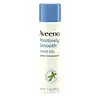What's inside
What's inside
 Key Ingredients
Key Ingredients

 Benefits
Benefits

 Concerns
Concerns

 Ingredients Side-by-side
Ingredients Side-by-side

Water
Skin ConditioningCetyl Alcohol
EmollientPropylene Glycol
HumectantGlycerin
HumectantCocoglycerides
EmollientStearyl Alcohol
EmollientLaureth-23
CleansingCI 77891
Cosmetic ColorantColloidal Oatmeal
AbsorbentPetrolatum
EmollientGlyceryl Stearate Se
EmulsifyingButyrospermum Parkii Oil
EmollientButyrospermum Parkii Butter
Skin ConditioningAloe Barbadensis Leaf Juice
Skin ConditioningLavandula Angustifolia Flower Extract
CleansingDimethicone
EmollientCaprylyl Glycol
EmollientParfum
MaskingPhenoxyethanol
PreservativeMagnesium Aluminum Silicate
AbsorbentPotassium Sorbate
PreservativeCarbomer
Emulsion StabilisingHexylene Glycol
EmulsifyingDisodium EDTA
Tocopheryl Acetate
AntioxidantAscorbyl Palmitate
AntioxidantSodium Hydroxide
BufferingCitric Acid
BufferingSodium Benzoate
MaskingCitronellol
PerfumingCoumarin
PerfumingGeraniol
PerfumingLimonene
PerfumingLinalool
PerfumingWater, Cetyl Alcohol, Propylene Glycol, Glycerin, Cocoglycerides, Stearyl Alcohol, Laureth-23, CI 77891, Colloidal Oatmeal, Petrolatum, Glyceryl Stearate Se, Butyrospermum Parkii Oil, Butyrospermum Parkii Butter, Aloe Barbadensis Leaf Juice, Lavandula Angustifolia Flower Extract, Dimethicone, Caprylyl Glycol, Parfum, Phenoxyethanol, Magnesium Aluminum Silicate, Potassium Sorbate, Carbomer, Hexylene Glycol, Disodium EDTA, Tocopheryl Acetate, Ascorbyl Palmitate, Sodium Hydroxide, Citric Acid, Sodium Benzoate, Citronellol, Coumarin, Geraniol, Limonene, Linalool
Water
Skin ConditioningPalmitic Acid
EmollientTriethanolamine
BufferingIsopentane
SolventSorbitol
HumectantStearic Acid
CleansingGlycerin
HumectantSorbitan Stearate
EmulsifyingIsobutane
Glycine Soja Seed Extract
Skin ConditioningParfum
MaskingBenzyl Alcohol
PerfumingSunflower Seed Oil Glyceride
EmollientHydroxyethylcellulose
Emulsion StabilisingPEG-12 Dimethicone
Skin ConditioningPhenoxyethanol
PreservativeHydroxypropyl Methylcellulose
Emulsion StabilisingMethylparaben
PreservativePropylparaben
PreservativeLactobacillus/Soybean Seed Ferment Extract
Skin ConditioningEthylparaben
PreservativePanthenol
Skin ConditioningTocopheryl Acetate
AntioxidantAloe Barbadensis Leaf Juice
Skin ConditioningAllantoin
Skin ConditioningWater, Palmitic Acid, Triethanolamine, Isopentane, Sorbitol, Stearic Acid, Glycerin, Sorbitan Stearate, Isobutane, Glycine Soja Seed Extract, Parfum, Benzyl Alcohol, Sunflower Seed Oil Glyceride, Hydroxyethylcellulose, PEG-12 Dimethicone, Phenoxyethanol, Hydroxypropyl Methylcellulose, Methylparaben, Propylparaben, Lactobacillus/Soybean Seed Ferment Extract, Ethylparaben, Panthenol, Tocopheryl Acetate, Aloe Barbadensis Leaf Juice, Allantoin
Ingredients Explained
These ingredients are found in both products.
Ingredients higher up in an ingredient list are typically present in a larger amount.
Aloe Barbadensis Leaf Juice comes from leaves of the aloe plant. Aloe Barbadensis Leaf Juice is best known for helping to soothe sunburns. It is also anti-inflammatory, moisturizing, antiseptic, and can help heal wounds.
Aloe is packed with good stuff including Vitamins A, C, and E. These vitamins are antioxidants, which help fight free-radicals and the damage they may cause. Free-radicals are molecules that may damage your skin cells, such as pollution.
Aloe Barbadensis Leaf Juice also contains sugars. These sugars come in the form of monosaccharides and polysaccharides, folic acid, and choline. These sugars are able to help bind moisture to skin.
It also contains minerals such as calcium, 12 anthraquinones, fatty acids, amino acids, and Vitamin B12.
Learn more about Aloe Barbadensis Leaf JuiceGlycerin is already naturally found in your skin. It helps moisturize and protect your skin.
A study from 2016 found glycerin to be more effective as a humectant than AHAs and hyaluronic acid.
As a humectant, it helps the skin stay hydrated by pulling moisture to your skin. The low molecular weight of glycerin allows it to pull moisture into the deeper layers of your skin.
Hydrated skin improves your skin barrier; Your skin barrier helps protect against irritants and bacteria.
Glycerin has also been found to have antimicrobial and antiviral properties. Due to these properties, glycerin is often used in wound and burn treatments.
In cosmetics, glycerin is usually derived from plants such as soybean or palm. However, it can also be sourced from animals, such as tallow or animal fat.
This ingredient is organic, colorless, odorless, and non-toxic.
Glycerin is the name for this ingredient in American English. British English uses Glycerol/Glycerine.
Learn more about GlycerinParfum is a catch-all term for an ingredient or more that is used to give a scent to products.
Also called "fragrance", this ingredient can be a blend of hundreds of chemicals or plant oils. This means every product with "fragrance" or "parfum" in the ingredients list is a different mixture.
For instance, Habanolide is a proprietary trade name for a specific aroma chemical. When used as a fragrance ingredient in cosmetics, most aroma chemicals fall under the broad labeling category of “FRAGRANCE” or “PARFUM” according to EU and US regulations.
The term 'parfum' or 'fragrance' is not regulated in many countries. In many cases, it is up to the brand to define this term.
For instance, many brands choose to label themselves as "fragrance-free" because they are not using synthetic fragrances. However, their products may still contain ingredients such as essential oils that are considered a fragrance by INCI standards.
One example is Calendula flower extract. Calendula is an essential oil that still imparts a scent or 'fragrance'.
Depending on the blend, the ingredients in the mixture can cause allergies and sensitivities on the skin. Some ingredients that are known EU allergens include linalool and citronellol.
Parfum can also be used to mask or cover an unpleasant scent.
The bottom line is: not all fragrances/parfum/ingredients are created equally. If you are worried about fragrances, we recommend taking a closer look at an ingredient. And of course, we always recommend speaking with a professional.
Learn more about ParfumPhenoxyethanol is a preservative that has germicide, antimicrobial, and aromatic properties. Studies show that phenoxyethanol can prevent microbial growth. By itself, it has a scent that is similar to that of a rose.
It's often used in formulations along with Caprylyl Glycol to preserve the shelf life of products.
Tocopheryl Acetate is AKA Vitamin E. It is an antioxidant and protects your skin from free radicals. Free radicals damage the skin by breaking down collagen.
One study found using Tocopheryl Acetate with Vitamin C decreased the number of sunburned cells.
Tocopheryl Acetate is commonly found in both skincare and dietary supplements.
Learn more about Tocopheryl AcetateWater. It's the most common cosmetic ingredient of all. You'll usually see it at the top of ingredient lists, meaning that it makes up the largest part of the product.
So why is it so popular? Water most often acts as a solvent - this means that it helps dissolve other ingredients into the formulation.
You'll also recognize water as that liquid we all need to stay alive. If you see this, drink a glass of water. Stay hydrated!
Learn more about Water